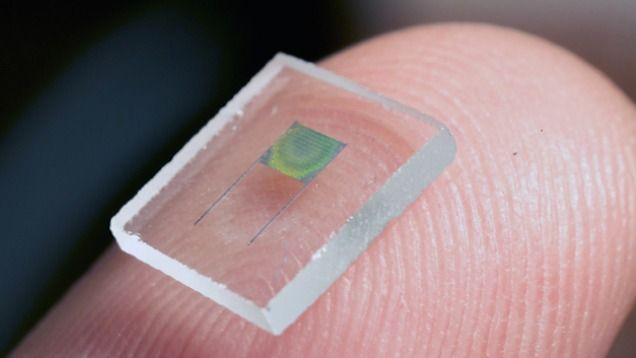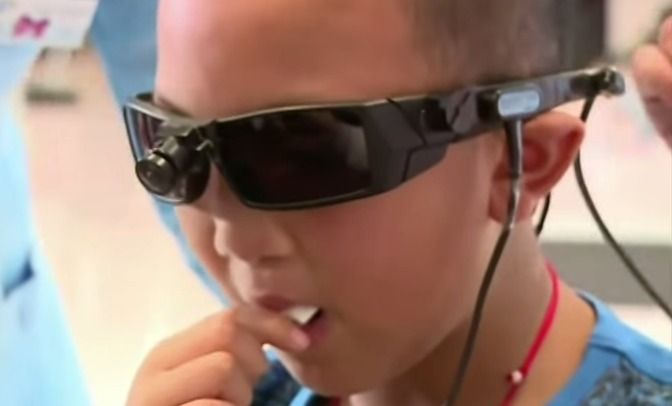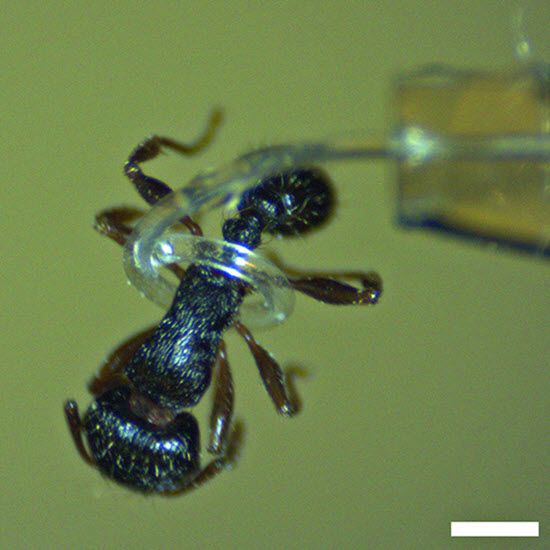Page 11107
Jun 24, 2015
Brain-to-text: decoding spoken phrases from phone representations in the brain — Frontiers of Neuroscience
Posted by Seb in category: neuroscience

“Here, we show for the first time that continuously spoken speech can be decoded into the expressed words from intracranial electrocorticographic (ECoG) recordings.” Read more
Jun 24, 2015
Dwarf Galaxies Loom Large in Quest for Dark Matter
Posted by Odette Bohr Dienel in categories: anti-gravity, astronomy, cosmology, energy, general relativity, particle physics, space
“In its inaugural year of observations, the Dark Energy Survey has already turned up at least eight objects that look to be new satellite dwarf galaxies of the Milky Way.”
Tag: Milky Way
Jun 23, 2015
FDA Approves BrainPort, Device That Allows The Blind To ‘See’ With Their Tongues
Posted by Lily Graca in categories: biotech/medical, neuroscience
The FDA-approved BrainPort V100 translates visual images into vibrations that can be felt on the tongue to help users better understand their surroundings.
Jun 23, 2015
How facial recognition will change shopping in stores
Posted by Bryan Gatton in categories: futurism, privacy
Jun 23, 2015
Strings Are Dead
Posted by Benjamin T. Solomon in categories: anti-gravity, cosmology, defense, general relativity, gravity, innovation, particle physics, philosophy, physics, policy, quantum physics, science, space travel
In 2014, I submitted my paper “A Universal Approach to Forces” to the journal Foundations of Physics. The 1999 Noble Laureate, Prof. Gerardus ‘t Hooft, editor of this journal, had suggested that I submit this paper to the journal Physics Essays.
My previous 2009 submission “Gravitational acceleration without mass and noninertia fields” to Physics Essays, had taken 1.5 years to review and be accepted. Therefore, I decided against Prof. Gerardus ‘t Hooft’s recommendation as I estimated that the entire 6 papers (now published as Super Physics for Super Technologies) would take up to 10 years and/or $20,000 to publish in peer reviewed journals.
Prof. Gerardus ‘t Hooft had brought up something interesting in his 2008 paper “A locally finite model for gravity” that “… absence of matter now no longer guarantees local flatness…” meaning that accelerations can be present in spacetime without the presence of mass. Wow! Isn’t this a precursor to propulsion physics, or the ability to modify spacetime without the use of mass?
As far as I could determine, he didn’t pursue this from the perspective of propulsion physics. A year earlier in 2007, I had just discovered the massless formula for gravitational acceleration g=τc^2, published in the Physics Essays paper referred above. In effect, g=τc^2 was the mathematical solution to Prof. Gerardus ‘t Hooft’s “… absence of matter now no longer guarantees local flatness…”
Tags: Air Force Research Lab, American Physical Society, Baa, Brian Green, Broad Agency Announcements, DARPA, Force Fields, Foundations of Physics, Gamow Memorial Lecture, General Relativity, Gerardus 'T Hooft, Gravity Modification, interstellar propulsion, Lorentz-Fitzgerald transformation, Missile Defense Agency, NASA, National Science Foundation, Naval Research Lab, Newtonian Gravitational Transformation, NGT, Noble Prize, Nsf, Physics Essays, Roger Penrose, Sandia National Lab
Jun 23, 2015
Honda’s Gravity Modification Research
Posted by Benjamin T. Solomon in categories: anti-gravity, business, cosmology, defense, disruptive technology, engineering, general relativity, gravity, innovation, particle physics, physics, quantum physics, science, space travel
Gravity modification, the scientific term for antigravity, is the ability to modify the gravitational field without the use of mass. Thus legacy physics, the RSQ (Relativity, String & Quantum) theories, cannot deliver either the physics or technology as these require mass as their field origin.
Ron Kita who recently received the first US patent (8901943) related to gravity modification, in recent history, introduced me to Dr. Takaaki Musha some years ago. Dr. Musha has a distinguished history researching Biefeld-Brown in Japan, going back to the late 1980s, and worked for the Ministry of Defense and Honda R&D.
Dr. Musha is currently editing New Frontiers in Space Propulsion (Nova Publishers) expected later this year. He is one of the founders of the International Society for Space Science whose aim is to develop new propulsion systems for interstellar travel.
Wait. What? Honda? Yes. For us Americans, it is unthinkable for General Motors to investigate gravity modification, and here was Honda in the 1990s, at that, researching this topic.
Jun 23, 2015
The ‘smart’ insulin patch that might one day replace injections for diabetic patients
Posted by Bryan Gatton in category: biotech/medical
Jun 23, 2015
Micro-tentacles for tiny robots can handle delicate objects like blood vessels
Posted by Sean Brazell in categories: biotech/medical, futurism, nanotechnology, robotics/AI
We are quickly approaching the point at which medical (and industrial) nanotech lives up to the hype!
Jun 23, 2015
Is Photon Based Propulsion, the Future?
Posted by Benjamin T. Solomon in categories: anti-gravity, defense, general relativity, gravity, innovation, particle physics, physics, quantum physics, science, space travel
I first met Dr. Young Bae, NIAC Fellow, at the Defense Advanced Research Projects Agency (DARPA) sponsored 2011, 100 Year Starship Study (100YSS) at Orlando, Fla. Many of us who were there had responded to the NASA/DARPA Tactical Technology Office’s RFP to set up an organization “… to develop a viable and sustainable non-governmental organization for persistent, long-term, private-sector investment into the myriad of disciplines needed to make long-distance space travel viable …”
Yes, both DARPA and NASA are at some level interested in interstellar propulsion. Mine was one of approximately 35 (rumored number) teams from around the world vying for this DARPA grant, and Dr. Bae was with a competing team. I presented the paper “Non-Gaussian Photon Probability Distributions”, and Dr. Bae presented “A Sustainable Developmental Pathway of Photon Propulsion towards Interstellar Flight”. These were early days, the ground zero of interstellar propulsion, if you would.
Dr. Bae has been researching Photon Laser Thrust (PLT) for many years. A video of his latest experiment is available at the NASA website or on YouTube. This PLT uses light photons to move an object by colliding with (i.e. transferring momentum to) the object. The expectation is that this technology will eventually be used to propel space crafts. His most recent experiments demonstrate the horizontal movement of a 1-pound weight. This is impressive. I expect to see much more progress in the coming years.
At one level, Dr. Bae’s experiments are confirmation that Bill Nye’s Light Sail (which very unfortunately lost communications with Earth) will work.
Continue reading “Is Photon Based Propulsion, the Future?” »













